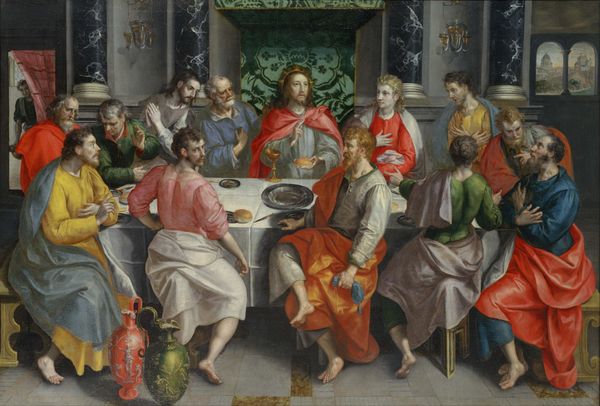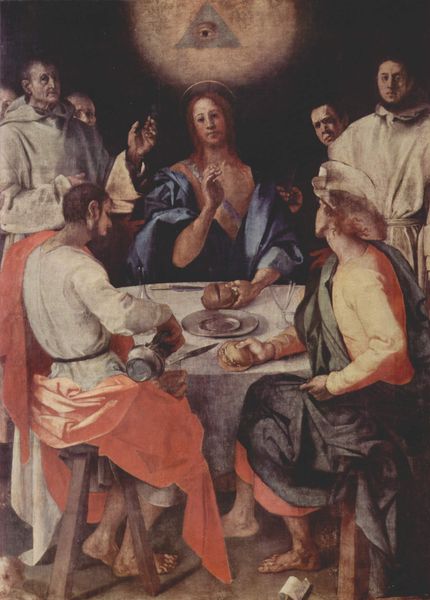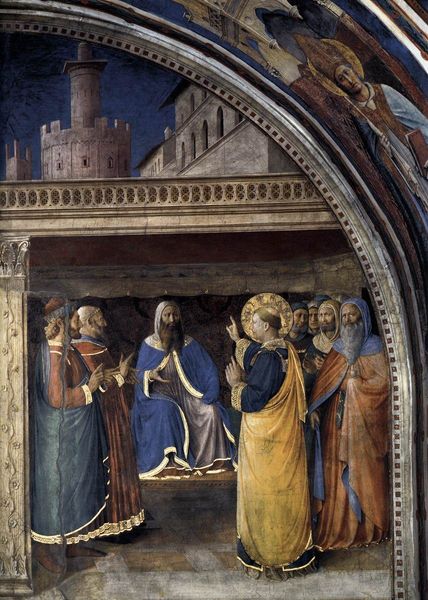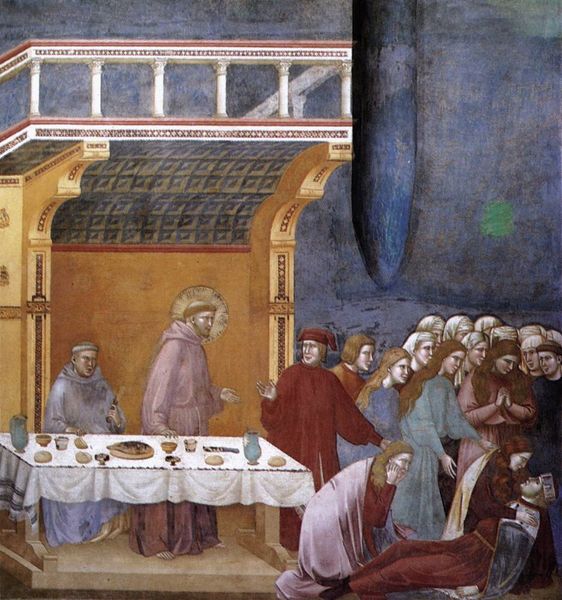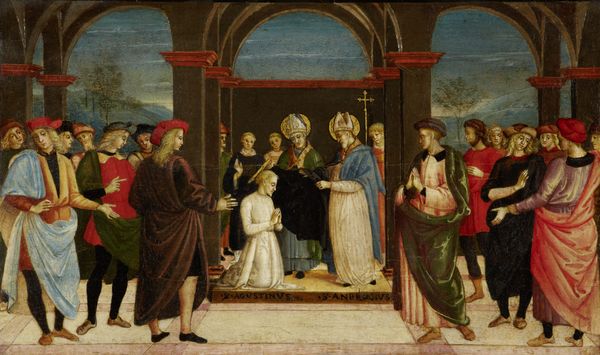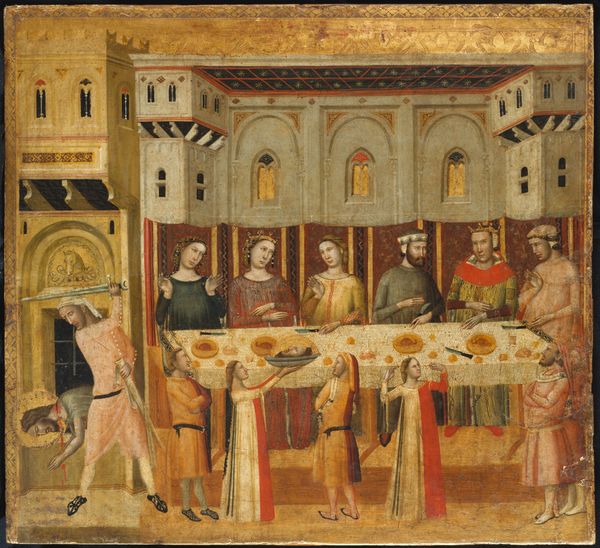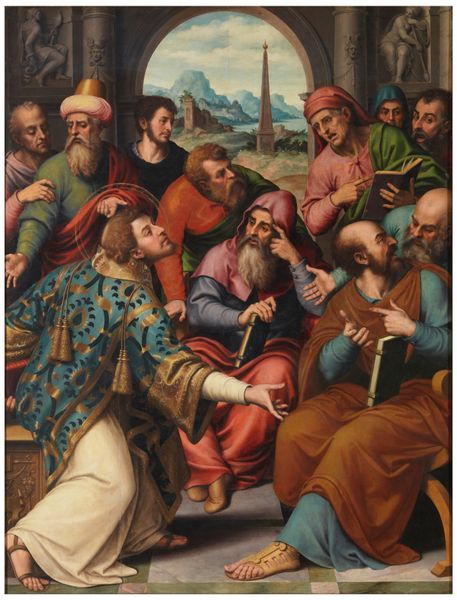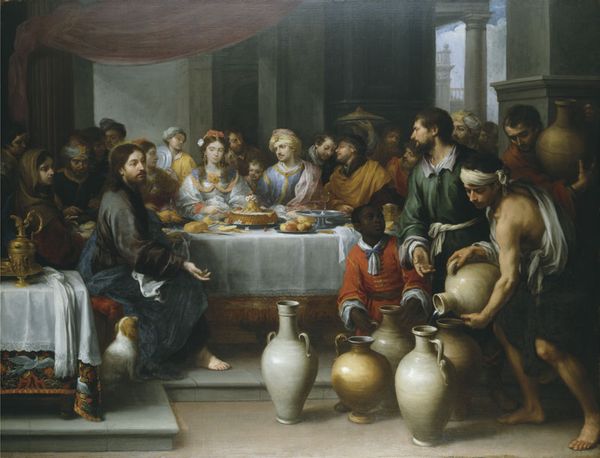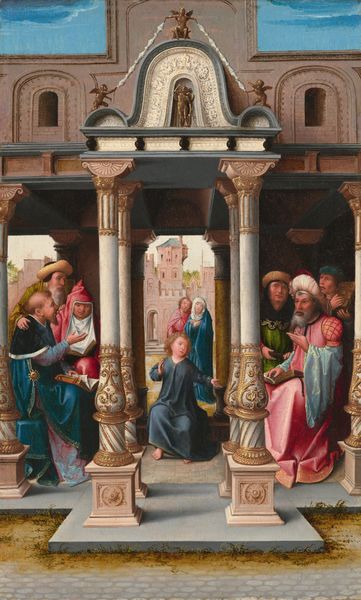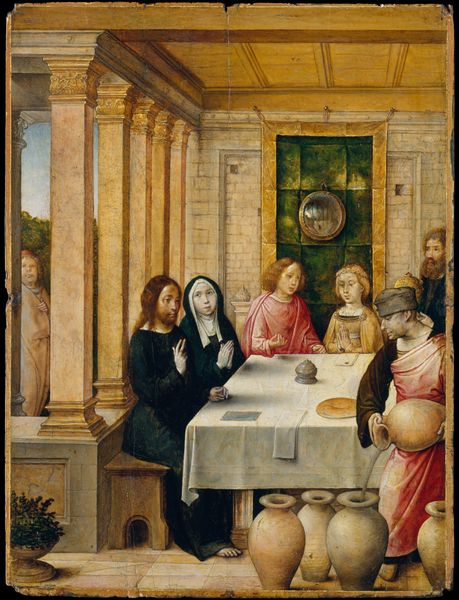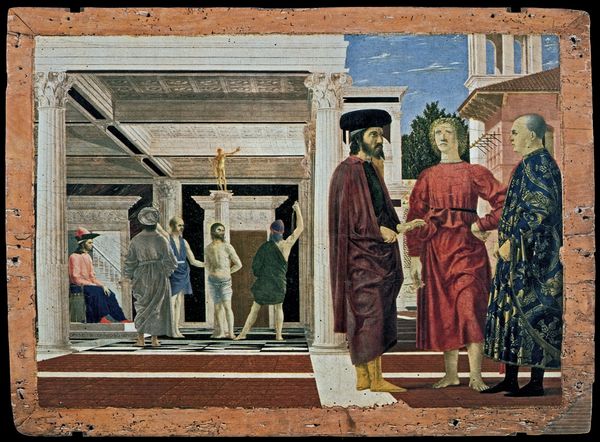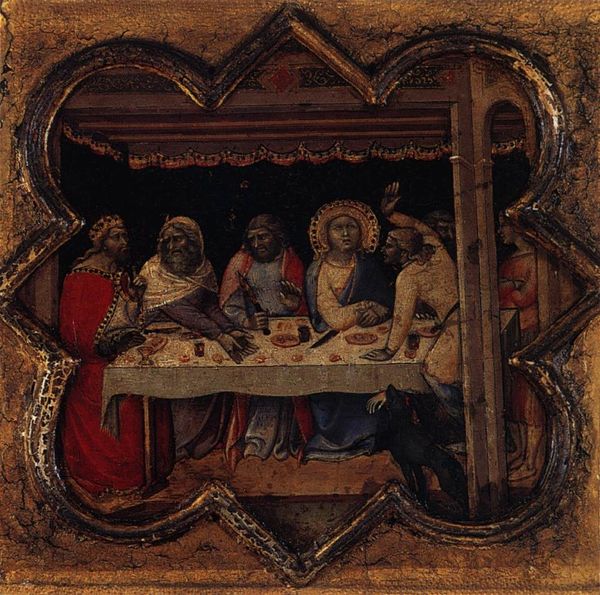
tempera, painting
#
portrait
#
tempera
#
painting
#
landscape
#
christianity
#
history-painting
#
italian-renaissance
#
early-renaissance
#
virgin-mary
#
christ
Dimensions: 54.5 x 42 cm
Copyright: Public domain
Editor: This is Andrea Mantegna’s "Death of the Virgin," a tempera on wood from 1461, currently housed in the Museo del Prado. There's a strange serenity in the scene, even though it depicts death. How do you interpret this work, with all its symbolic weight? Curator: It’s true, isn't it? While the subject is somber, Mantegna imbues it with a sense of composed solemnity. The key lies in the visual vocabulary. Consider the figures surrounding the Virgin - the apostles. Each holds a symbolic attribute: candles representing faith, palms signifying triumph over death. Even their placement creates meaning; they frame her deathbed, drawing the eye toward the still figure of Mary, uniting cultural memory and this single tragic moment. What stands out most for you? Editor: I am really drawn to the background... that incredible landscape through the window behind the scene. It’s so detailed and real compared to other works of that time, and feels so separate from the biblical story taking place. Is there a significance to it, beyond a landscape detail? Curator: Absolutely. Mantegna sets the scene in his native Padua. The bridge, the buildings—they all speak to a specific time and place, making the divine event relevant, a part of their lived world, grounding the spiritual in reality. Do you notice how the light in the landscape reflects subtly on the faces of the Apostles? The landscape is thus more than just an atmospheric setting; it's an active participant in this sacred moment, linking everyday existence to eternity. It reminds us of cyclical time and eternal continuity, despite one passing. Editor: That's fascinating! It connects this religious scene to the everyday life and experience of people in that period in a new way. I had never thought about the symbolism embedded in realism before. Curator: It’s Mantegna's genius, creating layers of meaning that blend historical specificity with the timeless mysteries of faith. It’s an incredible synthesis of the seen and unseen worlds that shaped this piece and has given it meaning to those throughout history who continue to appreciate this treasure.
Comments
No comments
Be the first to comment and join the conversation on the ultimate creative platform.
